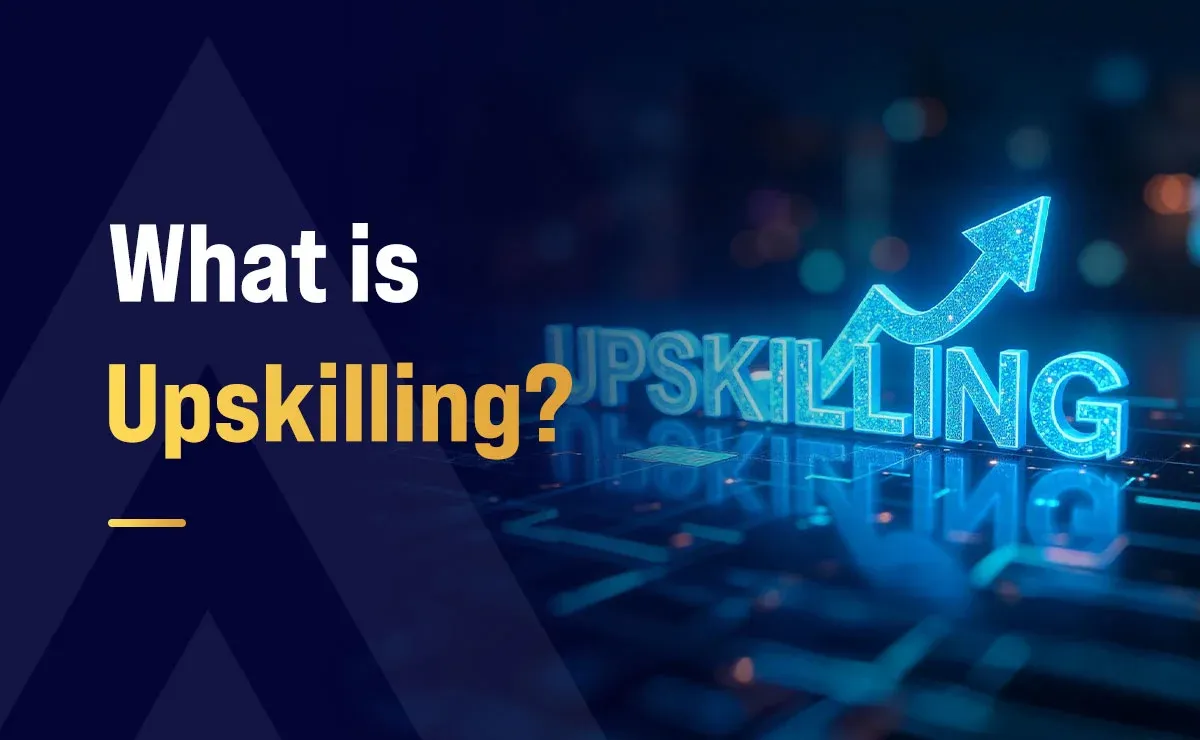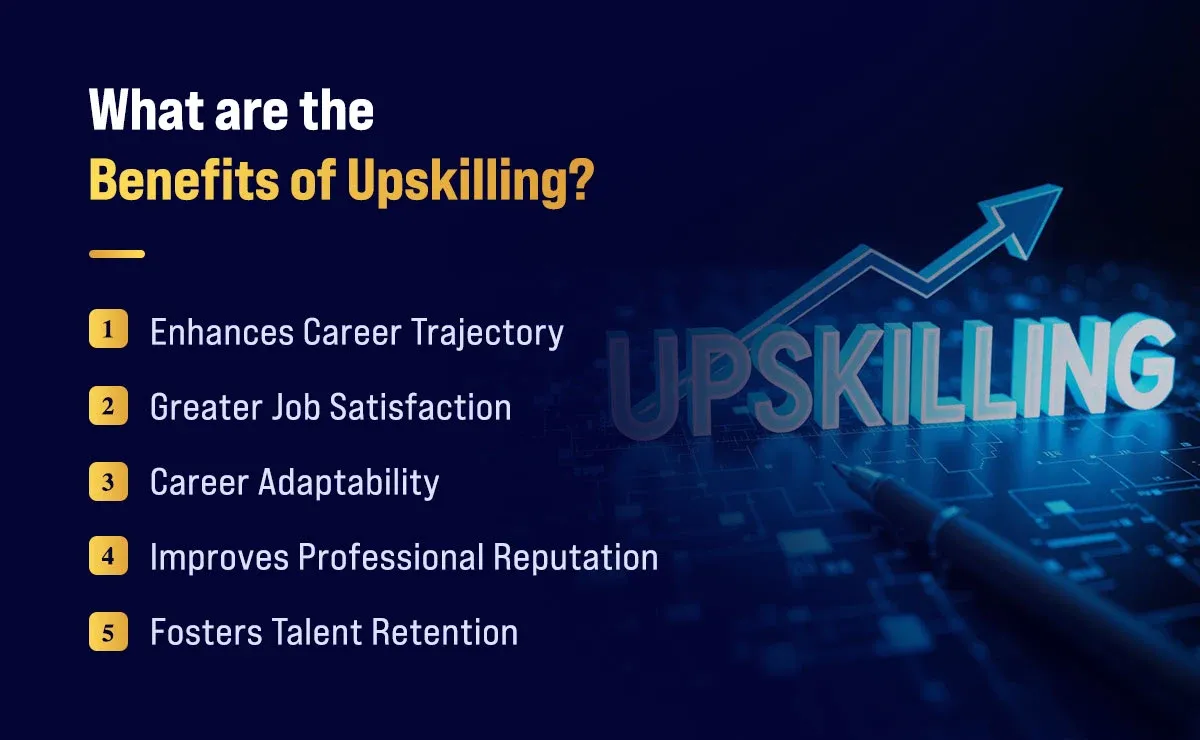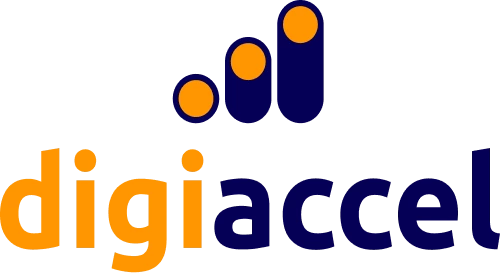What is Upskilling?

In today's rapidly evolving corporate landscape, adaptability defines success. A recent Microsoft study indicates that 65% of hiring managers face challenges in sourcing candidates with the necessary digital competencies. As technological advancements, emerging methodologies, and shifting market demands reshape workforce requirements, professionals must continuously evolve their abilities.
Upskilling and reskilling have become vital approaches for adapting to this evolving landscape. While both approaches serve vital roles in career development, upskilling specifically targets the enhancement and expansion of existing expertise rather than wholesale skill replacement.
This article examines the essence of upskilling, exploring its multifaceted benefits for individuals and organizations alike, outlining practical implementation strategies, and identifying potential pitfalls to ensure successful learning outcomes.
Understanding Upskilling
Upskilling involves acquiring new abilities or enhancing current ones to excel in your present role or advance in your career. It contrasts with reskilling, which teaches entirely new, cross-functional abilities to enable career pivots and sits alongside other Learning and Development (L&D) pillars like onboarding and leadership development.
Upskilling is driven by:
- Automation & AI, which automate routine tasks and shift human roles toward oversight and creative problem-solving.
- Digital transformation, where cloud platforms, big data, and GenAI demand new technical proficiencies.
- Market dynamics, including hiring freezes or tight labor markets that force companies to grow talent internally.
Unlike basic on-the-job experience, upskilling is a proactive and intentional effort to deepen knowledge, expand competencies, and enhance one’s career trajectory.
What are the Benefits of Upskilling?
A UNICEF analysis reveal that 33% of India’s youth workforce lacks the competencies needed for emerging jobs, highlighting the shortcomings of traditional education systems in supporting flexible learning. So, let's understand why upskilling is important and professionals should recognize its various benefits.

- Enhances Career Trajectory: Professionals who proactively learn new skills are more likely to earn promotions, take on leadership roles, and transition into high-demand areas. Mastering in-demand tools or methodologies not only demonstrates that you take initiative but also ensures you remain indispensable as your role and your industry evolves.
- Greater Job Satisfaction: When you’re empowered with the right skills, your work becomes more engaging and less frustrating. Upskilling eliminates knowledge gaps, allowing you to tackle challenges confidently and fostering a sense of accomplishment that boosts both morale and engagement.
- Career Adaptability: The shelf life of skills is shrinking. McKinsey reports that over 48% of employees rank training as the most important factor for AI adoption. This is why continuous learning is important and ensures that you remain relevant, adaptive, and prepared for new opportunities as industries transform.
- Improves Professional Reputation: A commitment to learning reflects positively on your personal brand. Upskilled professionals are seen as ambitious, adaptable, and forward-thinking, which are all qualities that are highly prized by employers, mentors, and industry peers.
- Fosters Talent Retention: Companies that understand and actively recognize, provide career advancement, and culture of continuous growth get to retain their best talents who upskill. Employees who see clear growth paths and skill-building support are more motivated and invested to stay in the company.
How to Upskill?
Upskilling isn’t about random courses or certificates — it’s a focused, strategic process of expanding your capabilities to stay relevant and competitive in your field. Whether you’re a seasoned professional or just starting your career, here’s a step-by-step guide to help you upskill effectively:
Assess Your Current Skills and Career Goals
Begin by identifying your strengths, weaknesses, and career aspirations. What are your immediate and future career objectives? Which skills are most sought-after in your field? Tools like self-assessments, feedback from peers or managers, and online skill benchmarking platforms (e.g., LinkedIn Skill Assessments) can help you pinpoint your gaps.
Identify High-Impact Skills
Focus on acquiring skills that offer the highest value to your role or desired career path. These could include:
- Technical skills like data analysis, programming, or digital marketing.
- Soft skills like leadership, communication, adaptability, or emotional intelligence.
- Future-proof skills such as AI literacy, critical thinking, and problem-solving.
Research job descriptions, industry reports, or LinkedIn trends to understand which capabilities are rising in importance.
Build a Learning Routine
Consistency is key to upskilling. Set realistic goals and carve out time for regular learning, whether it's 30 minutes a day or a few hours each weekend. Use tools like learning calendars or productivity apps (e.g., Notion, Trello) to track your progress.
Apply What You Learn
Theoretical knowledge yields little impact unless put into practice. Actively seek opportunities to apply newly acquired competencies within your existing responsibilities:
- Volunteer for new projects.
- Automate or improve a process.
- Share your learning with your team.
- Mentor others in your newly acquired skills.
Real-world applications reinforce learning, build confidence, and demonstrate your growth to stakeholders.
Seek Feedback and Reflect
Constructive feedback allows for continuous refinement and skill enhancement. Engage with peers, mentors, or supervisors to understand how your new skills are impacting your performance. Analyze successes, challenges, and future learning priorities.
How to Develop an Upskilling Strategy for Your Business?
Developing an upskilling strategy for your business requires a thoughtful, data-driven approach aligned with both business goals and employee aspirations. A well-rounded strategy also serves as the backbone of your broader Learning & Development (L&D) strategy, drives workforce development, and strengthens talent retention.
Here’s a practical roadmap to help your organization build a successful upskilling strategy:
Start with Auditing Current Skills
Before you invest in development programs, you need a clear picture of your current capabilities. Conduct a comprehensive skills inventory to document what your employees can do today, followed by a gap analysis to determine what’s missing for tomorrow.
Collaborate across departments—HR, L&D, business units, and executive leadership—to map current competencies against future business needs. This forms the foundation of your L&D strategy and allows for targeted workforce development planning that addresses critical shortages and accelerates future readiness.
Define Clear Business and Learning Objectives
An effective upskilling strategy begins with clearly defining what your organization aims to achieve through this effort. Whether it's accelerating digital adoption, improving internal mobility, or boosting employee engagement, your objectives should be measurable and supported at the highest levels of leadership.
Establishing clear success metrics for employees is just as crucial. Personalized learning goals that are tied to real business outcomes empower individuals to see the relevance of their growth journey.
Design Purpose-Driven Learning Paths
Customize learning materials to align with distinct job functions, team dynamics, and career progression levels. A finance analyst may benefit from upskilling in data visualization, while a frontline manager may need training in problem solving and team leadership.
Look beyond technical skills to include behavioral and leadership development, especially those preparing to move into managerial or cross-functional roles.
Choose the Right Learning Formats for Your Workforce
Modern learning should be flexible and accessible, which can be achieved via a blended approach that combines:
- E-learning modules for self-paced flexibility.
- Workshops and simulations for immersive experiences.
- On-the-job projects and mentoring to reinforce applied learning.
- Mobile-first content for deskless or field-based workers.
This blended approach supports different learning preferences while ensuring that development is integrated into work. It also reinforces a learning culture, which is central to talent retention.
Leverage Smart Technology
Technology is the backbone of scalable L&D. Use a robust learning experience platform (LXP) or human capital management (HCM) system to:
- Track individual and organizational learning progress.
- Match employees with personalized learning opportunities.
- Generate real-time analytics on skill development.
- Support cross-functional collaboration and transparency.
This centralization prevents siloed learning initiatives and gives leaders visibility into workforce capabilities and growth.
Enable Managers to Support Learning
Managers play a critical role in encouraging development, but they often lack the tools, time, or visibility to do so effectively. Empower your managers by:
- Giving them access to team learning dashboards.
- Training them to coach for development.
- Helping them link training outcomes with performance goals.
When leaders champion learning, it fosters a culture where upskilling becomes part of everyday work and not a side hustle.
Incentivize Participation
Employees are more likely to engage with development programs when they see tangible benefits. Consider offering:
- Certifications that enhance professional credibility.
- Bonuses or perks for completing in-demand skill tracks.
- Gamified elements (badges, leaderboards, recognition).
- Career advancement tied to upskilling milestones.
These incentives boost participation and reinforce the perception that the organization is committed to employee development and retention. When staff recognize tangible career benefits from development opportunities, their loyalty and long-term growth within the organization increase.
What are the Challenges of Upskilling?
While upskilling is essential today, it comes with challenges in today’s corporate age. Below are the key obstacles to watch for and overcome when designing your next learning initiative for your business.
- Misalignment with Strategic Priorities: Without a clear link to business goals, training becomes a checkbox exercise rather than a growth driver. Organizations must ground every learning effort in real-world objectives—whether that’s boosting digital adoption, improving customer experience, or accelerating product innovation—to ensure resources aren’t squandered on irrelevant skills.
- Low Engagement: Generic, inflexible learning content lacks the appeal and inspiration needed to captivate participants. Modern learners expect bite-sized, interactive modules, social learning opportunities, and hands-on practice. When upskilling programs neglect personalization and active participation, completion rates and knowledge retention quickly plummet.
- Inadequate Measurement and Feedback Loops: Tracking only course completions obscures the true impact of training. Without defining success metrics (e.g., performance improvements, internal promotion rates, customer satisfaction gains) and collecting learner feedback, organizations lack the data needed to refine content and demonstrate ROI.
- Lack of Ongoing Reinforcement: Skills fade if they aren’t reinforced in day-to-day work. Upskilling must extend beyond a single workshop or e-learning module—instead of embedding coaching, peer check-ins, and on-the-job projects to solidify learning and drive behavioral change over time.
- Ignoring Tomorrow’s Skill Demands: Focusing solely on current gaps leaves teams unprepared for emerging technologies and market shifts. By regularly scanning industry trends, building flexible learning pathways, and championing learning agility, organizations can equip their workforce to adapt and thrive in an ever-changing landscape.
Differences Between Reskilling and Upskilling
Here’s a breakdown of the distinctions between reskilling and upskilling.

Aspect | Upskilling | Reskilling |
Definition | Deepening or expanding current skills to enhance performance in the same role or industry. | Acquiring completely new competencies to transition into a different position or sector. |
Primary Goal | Improve expertise and productivity within one’s existing career trajectory. | Enable career pivots or transitions into new functions. |
Learning Path | Often shorter, targeted courses or micro-learning modules that refine current capabilities. | More structured programs like bootcamps, diplomas, certifications, or formal degree pathways. |
Typical Methods | Online courses, webinars, workshops, certifications, mentoring, and micro-learning. | Intensive training programs, internships, apprenticeships, full-time study, and hands-on projects. |
Example | A software engineer mastering a new framework to build more complex applications. | A manufacturing technician retraining as a cybersecurity analyst. |
Business Benefit | Addresses incremental skill gaps and boosts retention by rewarding growth within the company. | Fills emergent roles and mitigates redundancy risk, maximizing internal mobility. |
Summing Up
With the relentless pace of digital transformation, upskilling initiatives have evolved from optional perks to organizational necessities. By deliberately deepening existing capabilities, organizations close critical talent gaps, boost engagement, and future-proof their workforce. For professionals, continuous learning unlocks new responsibilities, enhances job satisfaction, and fortifies career resilience.
Successful upskilling hinges on strategic alignment, personalized learning paths, blended delivery methods, and robust measurement. Equally important is leadership support—managers who coach, recognize progress, and embed new skills into daily work. By avoiding common pitfalls like misaligned objectives or one-off training, your company can create a sustainable culture of growth.

